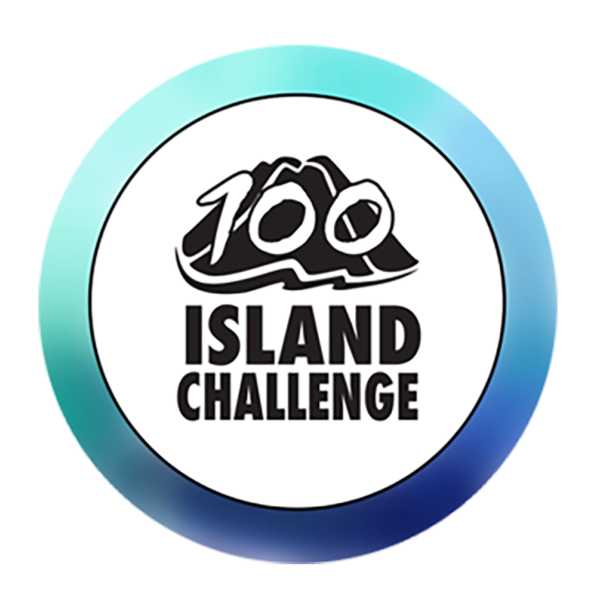100 Island Challenge Collection
About this collection
- Collection
- Extent
-
48 digital objects.
- Cite This Work
-
Sandin, Stuart A.; Zgliczynski, Brian J. (2021). 100 Island Challenge Collection. In Center for Environmental Imaging Collection. UC San Diego Library Digital Collections. https://doi.org/10.6075/J0DV1HDR
- Description
-
The goal of this study is to conduct a large-scale natural experiment, investigating the independent and interactive effects of oceanography and human activities in affecting the structure and dynamics of coral reef communities. The natural experimental design uses islands as statistical replicates, as we select focal islands and reefs to span a diversity of combinations of human activity, oceanographic conditions (principally temperature and nutrient delivery), and island geomorphology. Critically, we are controlling for within-island variables by conducting the core surveys within the same habitat type – leeward, forereef habitat at 7-15m depth.
We employ a collection of standardized approaches to quantify the structure and the workings of each coral reef community. A summary of the methodology follows:
Fishes. We use underwater visual census approaches to enumerate the density, size structure, and species composition of the fish assemblage at each reef. The surveys enable us to quantify critical elements of the size structure, trophic structure, and species diversity. Further, by using techniques of ecological and fisheries science, we provide estimates of potential fisheries production, building off complementary efforts of life history analysis.
Corals and algae. We use photographic survey techniques to describe the benthic composition from each reef. Photoquadrats are collected to provide raw data on the percent coverage, species composition, and physiological health of corals, algae, and other benthic taxa. Further, we employ novel approaches of underwater large-area ‘photomosaic’ technology to document the spatial structure and competitive dynamics of benthic taxa. This approach generates multiple digital products, including images collected in the field, composite 3D models, 2D orthorectified images of the 3D models, and annotations of the 2D orthorectified images. Our design includes two surveys (separated by 2-3 years) for each site. By re-visiting exact locations and replicating mosaic photography, we have the unprecedented opportunity to track the dynamics of individual corals and patches of algae. In particular, with advanced image analysis we can track how a reef community changes, addressing questions of coral growth, death, and competition that are currently unresolved.
By combining these image-based data with reliable information about the composition of the fish community, the general oceanography, and the human population dynamics at each location, we can elucidate the conditions that are more (or less) conducive to the maintenance of growing and so-called “healthy” coral reefs. - Date Collected
- 2012 to present
- Date Issued
- 2021
- Project Director
- Principal Investigator
- Series
-
- 100 Island Challenge - Fanna (Island)
- 100 Island Challenge - Helen (Expedition)
- 100 Island Challenge - Helen (Island)
- 100 Island Challenge - Huahine (Island)
- 100 Island Challenge - Kaho'olawe (Island)
- 100 Island Challenge - Kerama (Island)
- 100 Island Challenge - Lāna'i (Island)
- 100 Island Challenge - Maui Nui (Expedition)
- 100 Island Challenge - Merir (Island)
- 100 Island Challenge - Miyako (Island)
- 100 Island Challenge - Mo'orea (Expedition)
- 100 Island Challenge - Mo'orea (Island)
- 100 Island Challenge - Moloka'i (Island)
- 100 Island Challenge - Okinawa (Expedition)
- 100 Island Challenge - Okinawa (Island)
- 100 Island Challenge - Palau (Expedition)
- 100 Island Challenge - Palau Central (Island)
- 100 Island Challenge - Palau North (Island)
- 100 Island Challenge - Palau South (Island)
- 100 Island Challenge - Pulo Anna (Island)
- 100 Island Challenge - Raiatea (Island)
- 100 Island Challenge - Rarotonga (Expedition)
- 100 Island Challenge - Rarotonga (Island)
- 100 Island Challenge - Samoa (Expedition)
- 100 Island Challenge - Savai'i (Island)
- 100 Island Challenge - Society Islands (Expedition)
- 100 Island Challenge - Sonsorol (Island)
- 100 Island Challenge - Tahiti (Island)
- 100 Island Challenge - Tetiaroa (Island)
- 100 Island Challenge - Tobi (Island)
- 100 Island Challenge - Upolu (Island)
- 100 Island Challenge - Yaeyama (Island)
- Geographics
- Topics
Formats
View formats within this collection
- Language
- No linguistic content; Not applicable
- Identifier
-
Identifier: Brian J. Zgliczynski: http://orcid.org/0000-0003-1552-7879
Identifier: Stuart A. Sandin: http://orcid.org/0000-0003-1714-4492
 Library Digital Collections
Library Digital Collections
